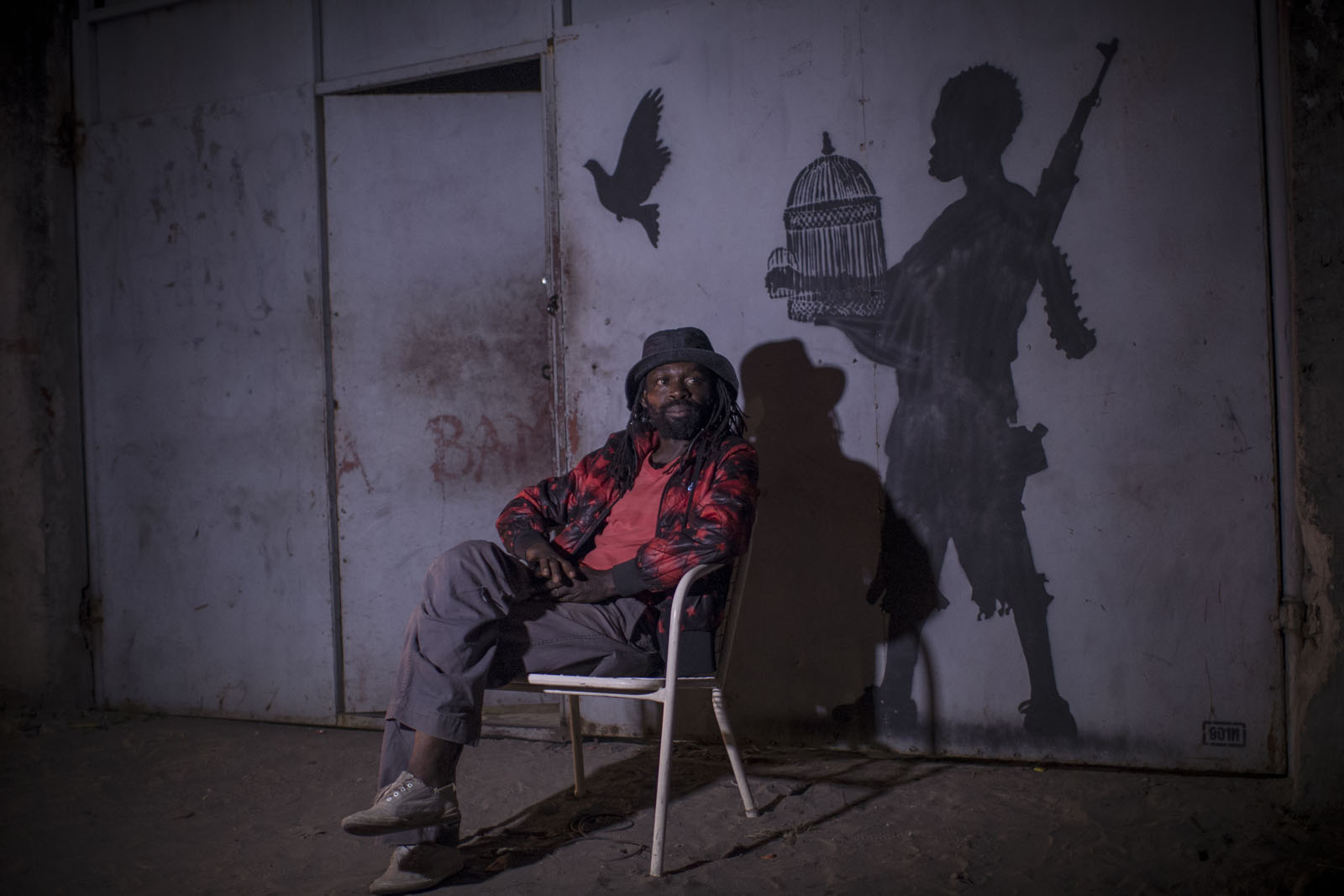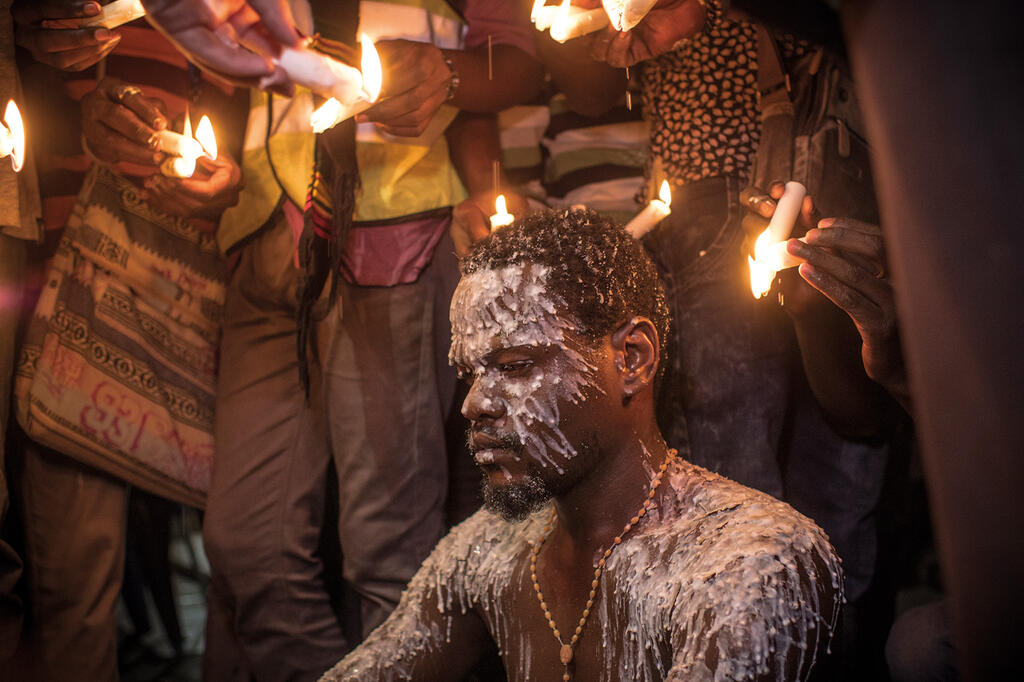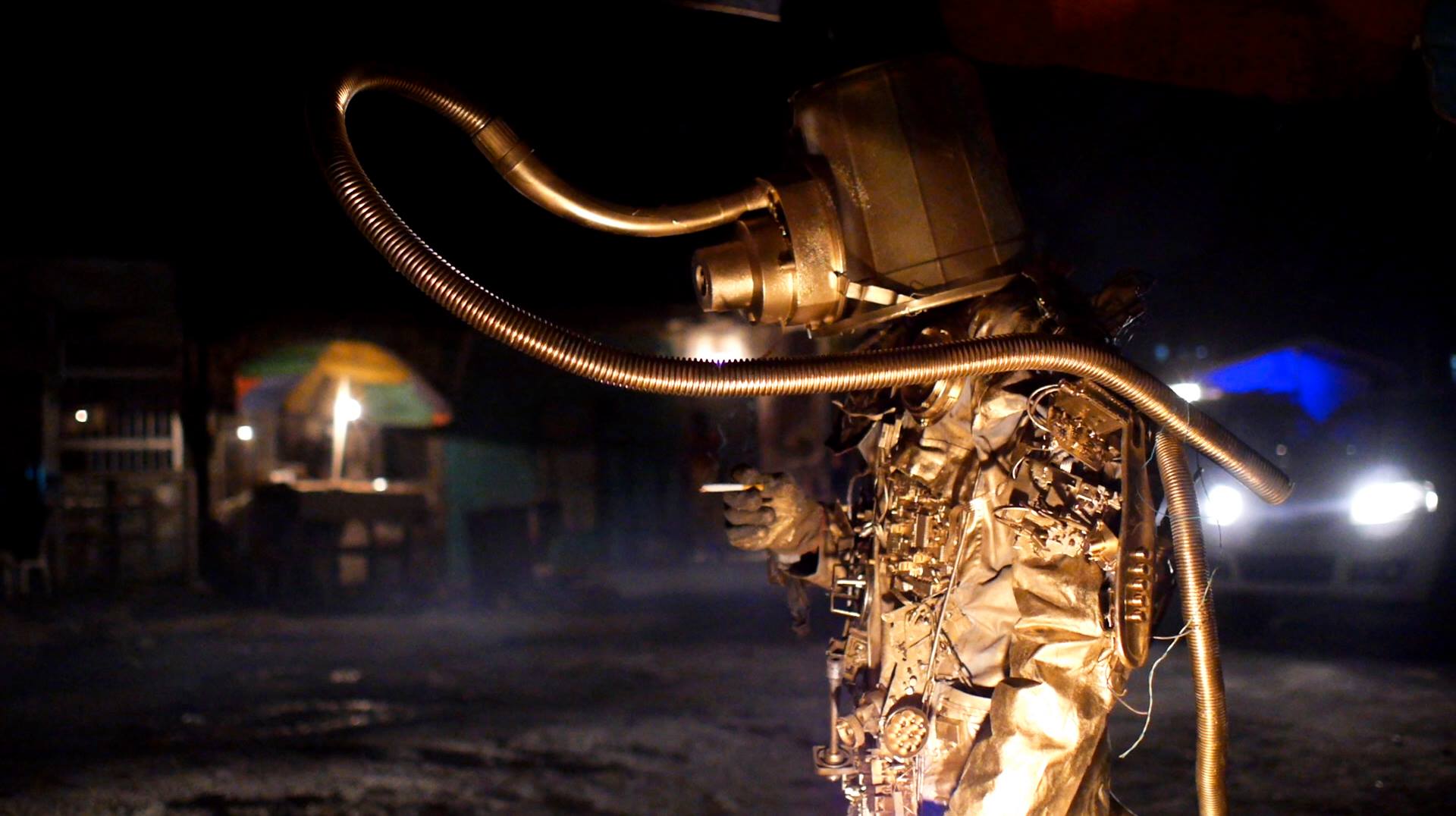Système K, chaos and survival in Kinshasa
Published 30 March 2020 by Céliane Svoboda
Treading through the debris of failed politics, between the joy of creating, poverty, getting by and moving on, for almost four years, documentary filmmaker Renaud Barret followed several young artists in Kinshasa. His film “System K” was released in January.
Every day, the residents of Kinshasa, capital of the Democratic Republic of Congo, fight to survive in a chaotic environment that is intrinsically linked to the contemporary techno-capitalist system. Système K portrays contemporary artists who live and work in this failing, cluttered city, piled up with garbage, drowned in noise—a glaring reflection of the world’s contradictions. Living conditions are precarious at best, where many neighborhoods lack basic electricity and running water, yet amidst the turmoil, Kinshasa is bursting with energy, strength and art.
Street arts and chaos
“Our artworks are born out of chaos. We have the same necessity to invent as the rest of the population, where people need to constantly reinvent the conditions for their survival,” declares Freddy Tsimba, one of the artists portrayed in the film. His sculptures and installations reference the trauma of wars that broke out during the digital boom of the turn of the century. He uses bullet cases to create statues that he mass produces with the help of the community. In the film, we see how he builds a “house” made entirely from machetes welded together and installs it on a public square in the heart of Kinshasa, offering his art to its citizens.
Neither waterproof nor truly closed, Tsimba’s “house” becomes an obvious metaphor for the ultra-violence of both the city and society. Like a call to arms, a public denunciation, the artwork is frank, direct, arresting. People pass by, stop, observe—until the police, just as perplexed, finally come to arrest him. Renaud Barret follows artists who work on the street, independently of any institutions or galleries, who integrate into their environment through making art, but who also can’t escape it.

Out of fire and smoke
The film also follows young artist Béni Barras, who spends most of his time at the School of Fine Arts without actually being a student. He collects what he can from anywhere in the city to produce his compositions. His artworks are made primarily from melting down what he finds.
Géraldine Tobe is an artist who paints with smoke. She paints by candlelight, in an atmosphere that evokes any number of rituals. The smoke that stains the canvas makes the painting.
Also using fire, Yas Ilunga denounces rituals such as those of evangelical churches, through performances where he submits himself to extreme physical conditions. For one performance, hot candlewax is dripped onto his bare skin until his entire body is covered in wax.

These works are informed as much by the artists’ personal struggles as by their unique vision of the world. Often working for free, their art is both a means of survival amid the chaos and a call to action. Between awareness and invention, nothing is simple in this city on fire.
Kokoko! from noise to music
As Kinshasa bubbles with activity, members of the Kokoko! collective unite through music. They make musical instruments out of found objects and garbage, empty cans, typewriters… From DIY sound art, Kokoko! produced the soundtrack to Système K with Xavier Thomas (Débruit) and Liam Farrell (Doctor L). They call their music tekno kintueni, or zagué, with hypnotizing sounds of electro-rumba groove and punk.
Presentation of Kokoko! in 2017, featuring scenes that also appear in Système K:
Astronauts without a spaceship
Another featured performance is by Kongo Astronauts, a collective founded in 2013 by local artists Michel Ekeba and Eléonore Hellio. In the film, Ekeba walks the streets of Kinshasa, an Afronaut fallen from the sky. His costumes, works of art in themselves, are made from discarded plastic or metallic debris, repainted silver or gold, electronic waste that has drifted back to Kinshasa after traveling around the planet. Indeed, the minerals used to make electronic devices worldwide are often extracted from mines in the Congo. Ekeba tells us that the coltan wars (the Congo is the world’s largest reserve with 60-80% of resources) have left deep wounds, while high-tech communication satellites float above Kinshasa.
Système K was released in France just as another documentary on the Congo, Fly Rocket Fly, was broadcast on Arte TV. Fly Rocket Fly is set in the 1970s under the regime of Mobutu Sese Seko. In it we learn that the Congo acquired OTRAG, the first commercial developer and producer of space launch vehicles. With Mobutu’s blessing, the German engineers of OTRAG set up a launch pad in the south-east of the country, but the controversial program didn’t last. No rocket could reach the limits of the atmosphere. No doubt an influence on Kongo Astronauts, where each character is a dystopian cyborg, an Afro-futurist autonomous astronaut who explores city, ruins and forests, physically trapped on Earth but whose imagination is unlimited. “We are crossing the vertigo of the worlds,” they say.
But for Ekeba and Hellio, the collective is not limited to performance, it also creates experiences. To document these experiences, Kongo Astronauts makes short films, never finished, somewhere between cinematic poems and VJing, always in motion: “KA is a visual, audio, textual and spatio-temporal experience. We respond to the troubles and blackouts of the contemporary cyborg with performative actions and narratives, attempt to resist the psychological ghettos resulting from our (post-)colonial condition. We take action in the interzones of digital globalization where past, future and present clash. As post-displinary players, our cosmic apparitions and polysemic fictions challenge the current conditions for production, creation and distribution of artworks that are sometimes hard to classify, refusing (or at least resisting) the finished object.”
Even the name of the collective, always constituting and reconstituting itself, suggests that it is incapable of inhabiting the place. But the performances of Kongo Astronauts are also a declaration of love for the territory, with unmistakable empathy for Kinshasa and the Congo.

Planet K
The film Système K is itself a highly esthetic paradox. Kinshasa is both tortured and magnificent. As Système K shows us a city suffering from corruption and postcolonialism through a handful of residents, our “first-world” padded movie seats become increasingly uncomfortable. While we admire the film’s music and visuals, sympathizing with the protagonists, it also reflects a hollow portrait of the “global periphery” that we are quick to forget as soon as we leave the theater, horrified by the images of an open-air garbage dump, confronted with the consequences of our savage mining of natural resources to appease our consumerist lifestyles, looking into a racist mirror of our capitalist manufacturing of disposable objects destined for the underclasses of the first-, second- and third worlds. Système K remains an enigma—a film that is unquestionably magnificent, but infinitely troubling.
Système K, by Renaud Barret, Les films en vrac, 2019
